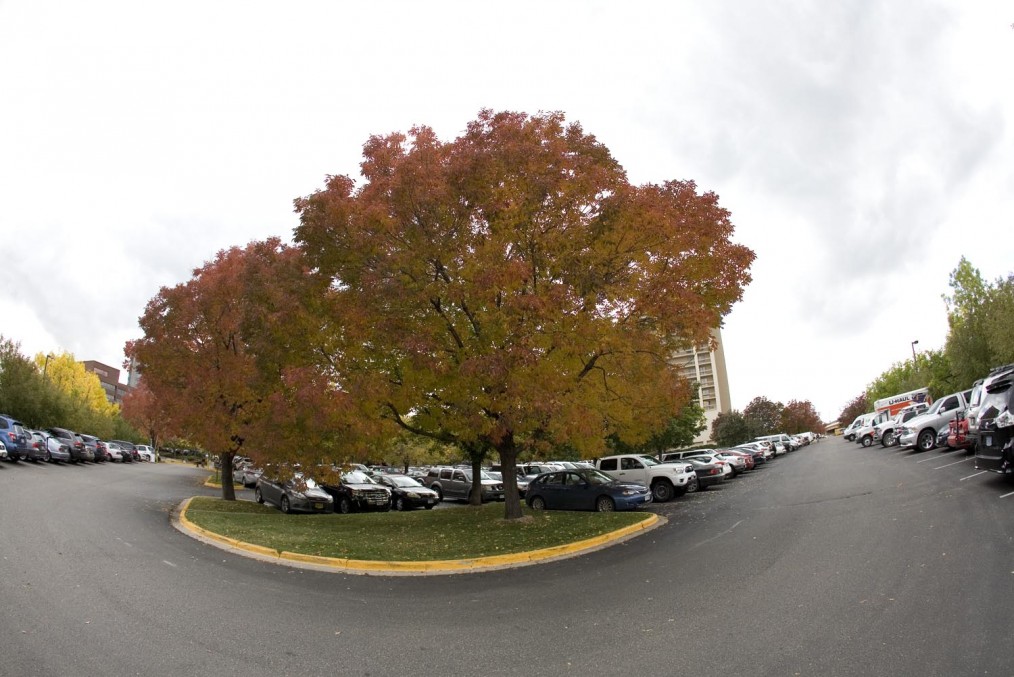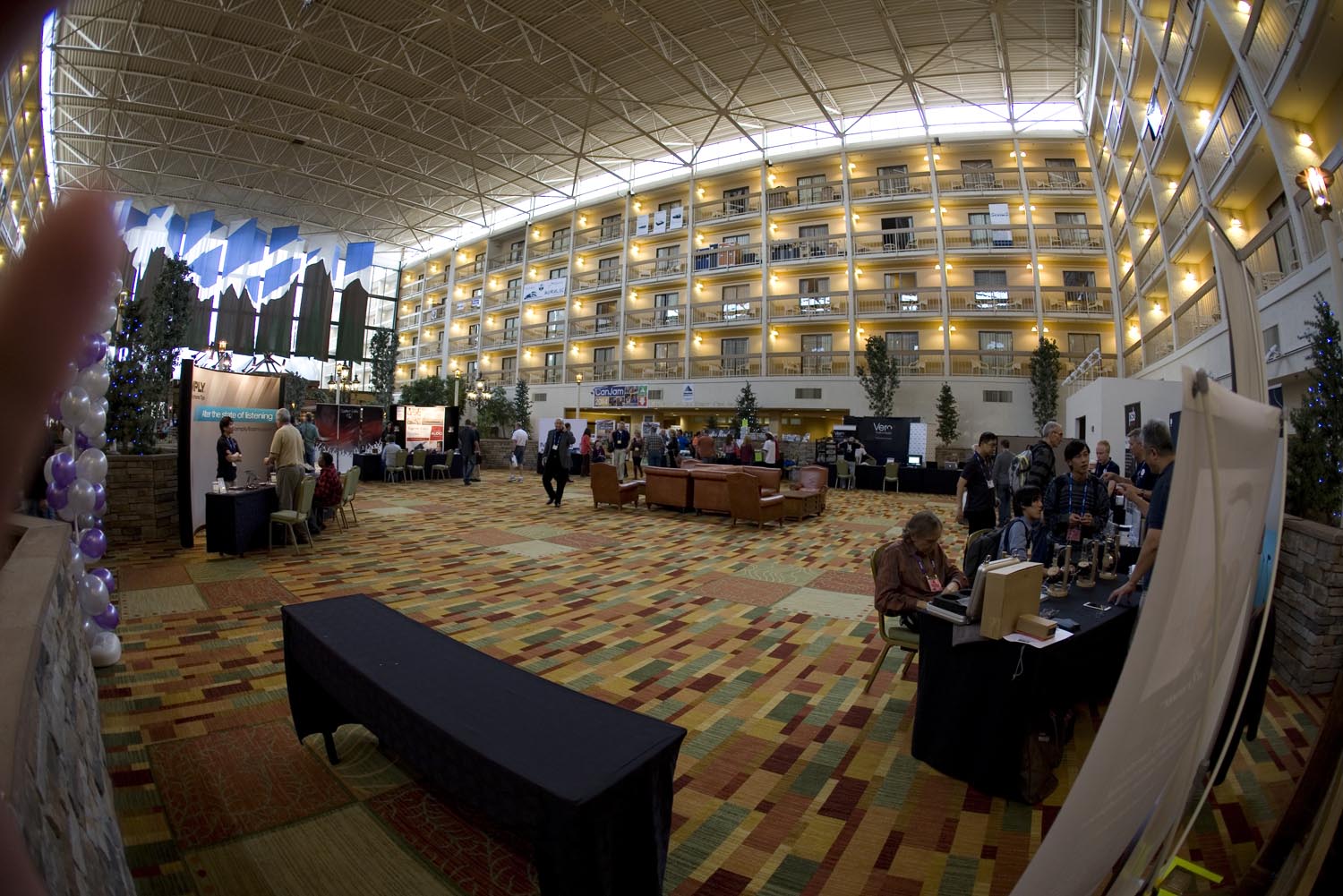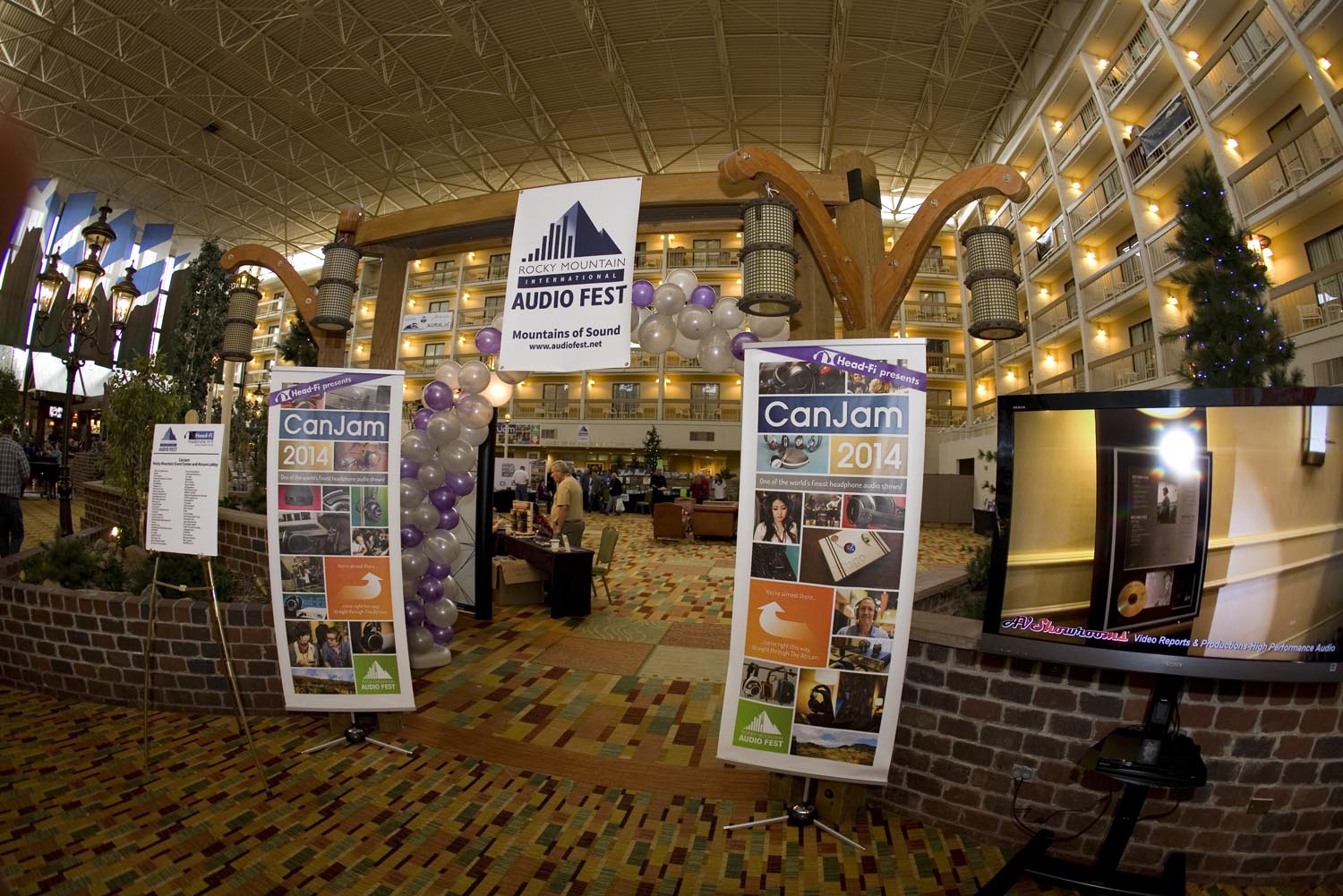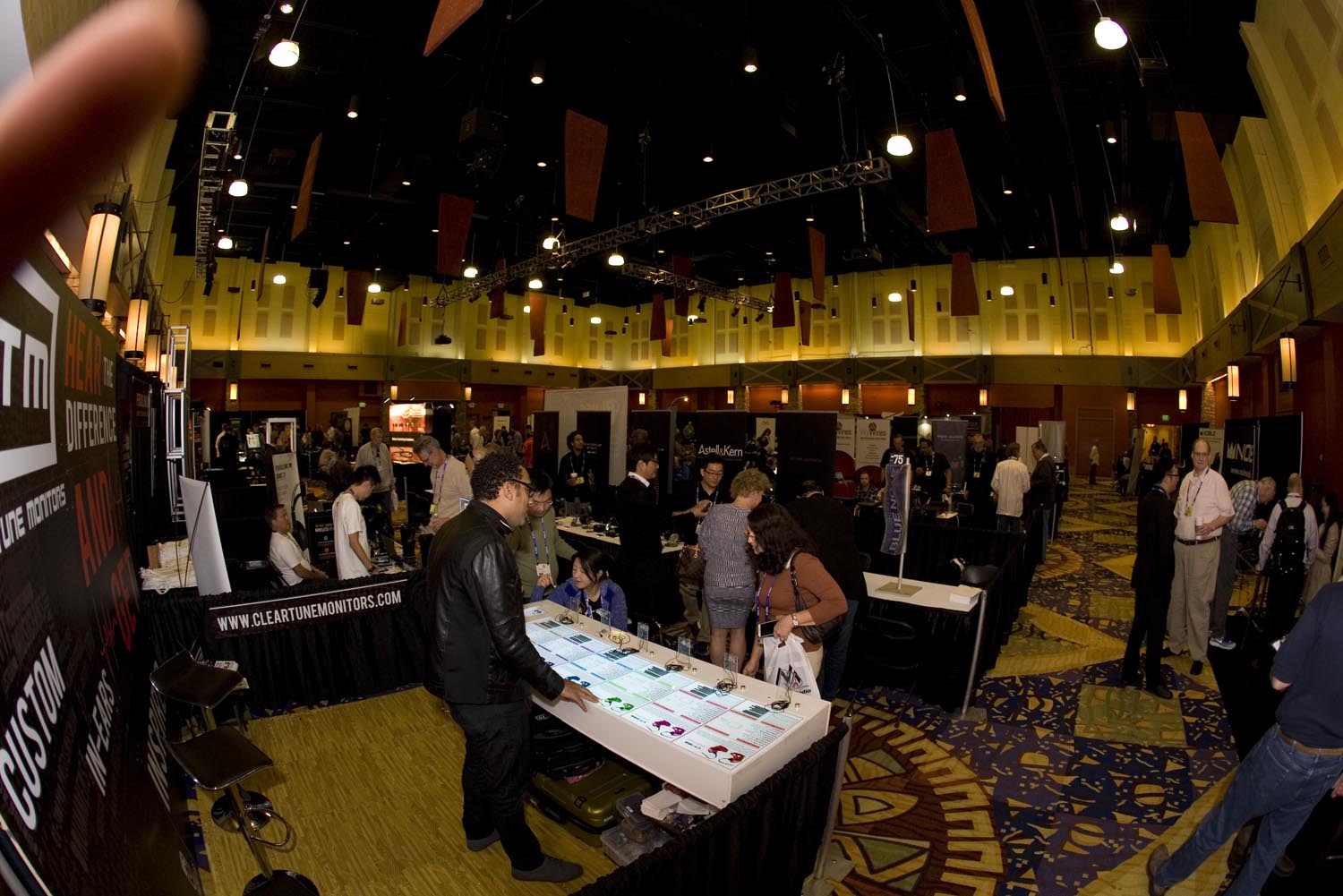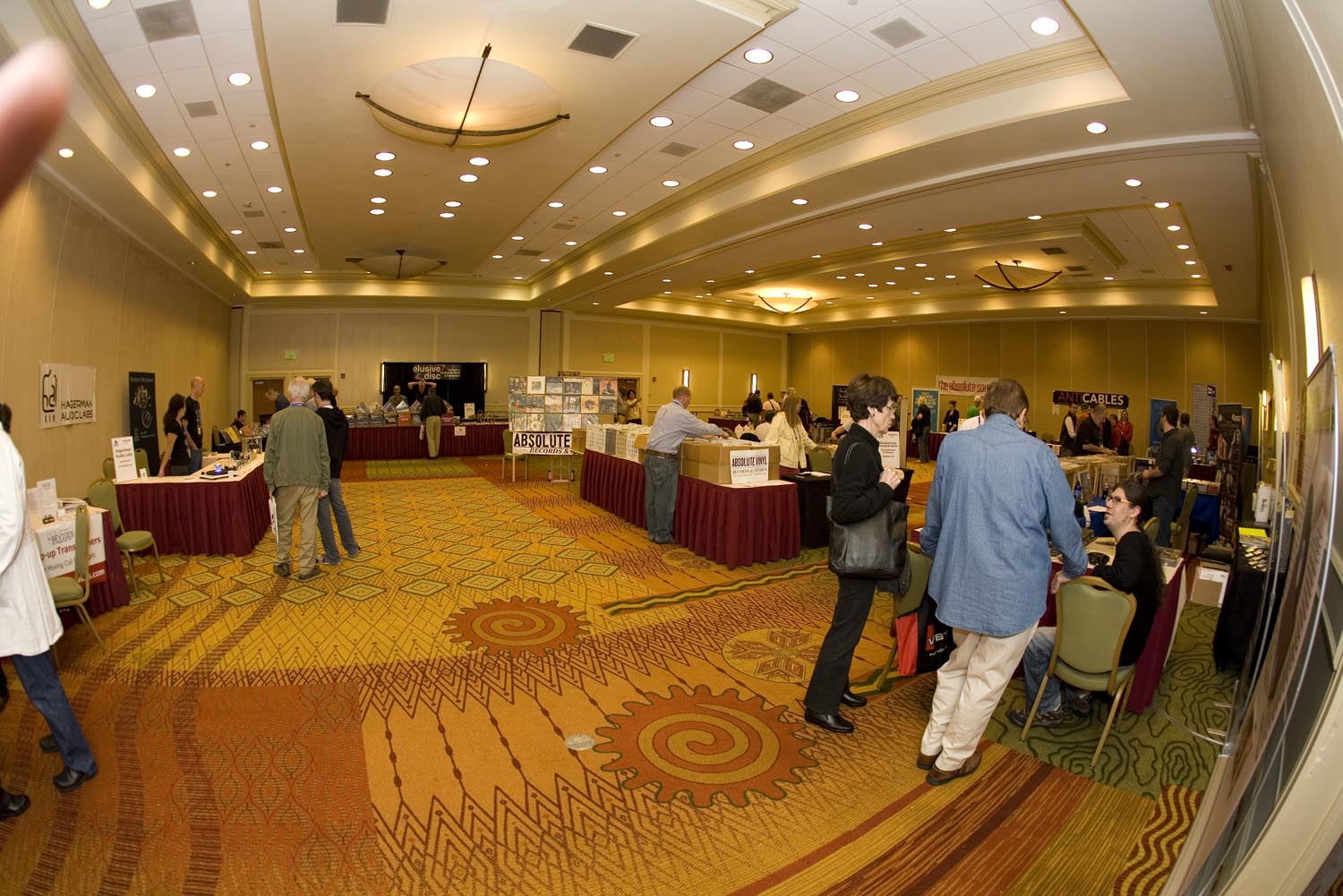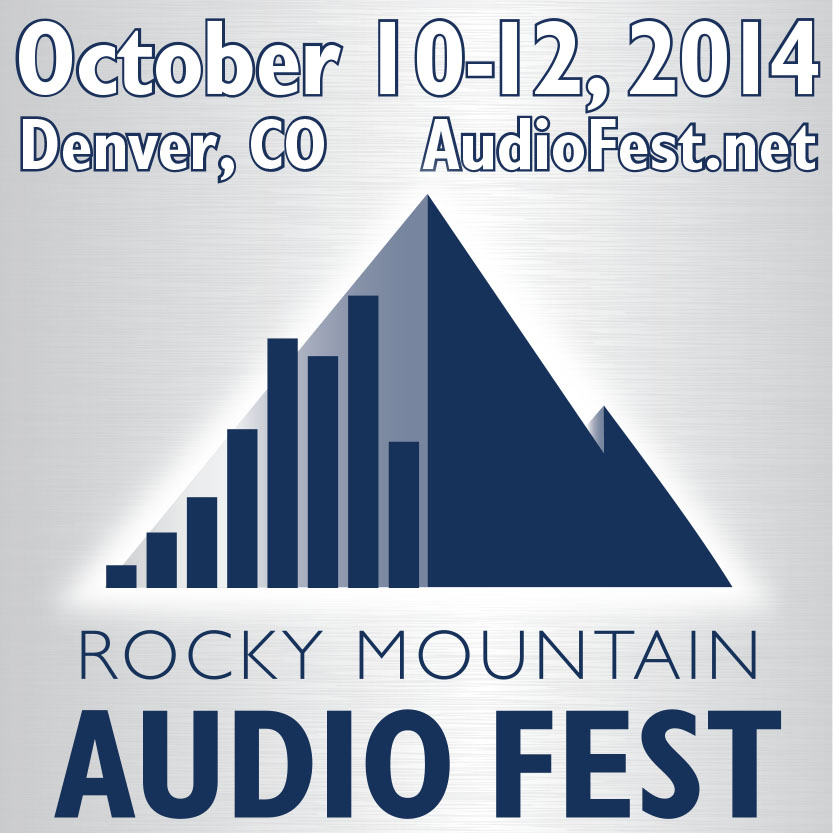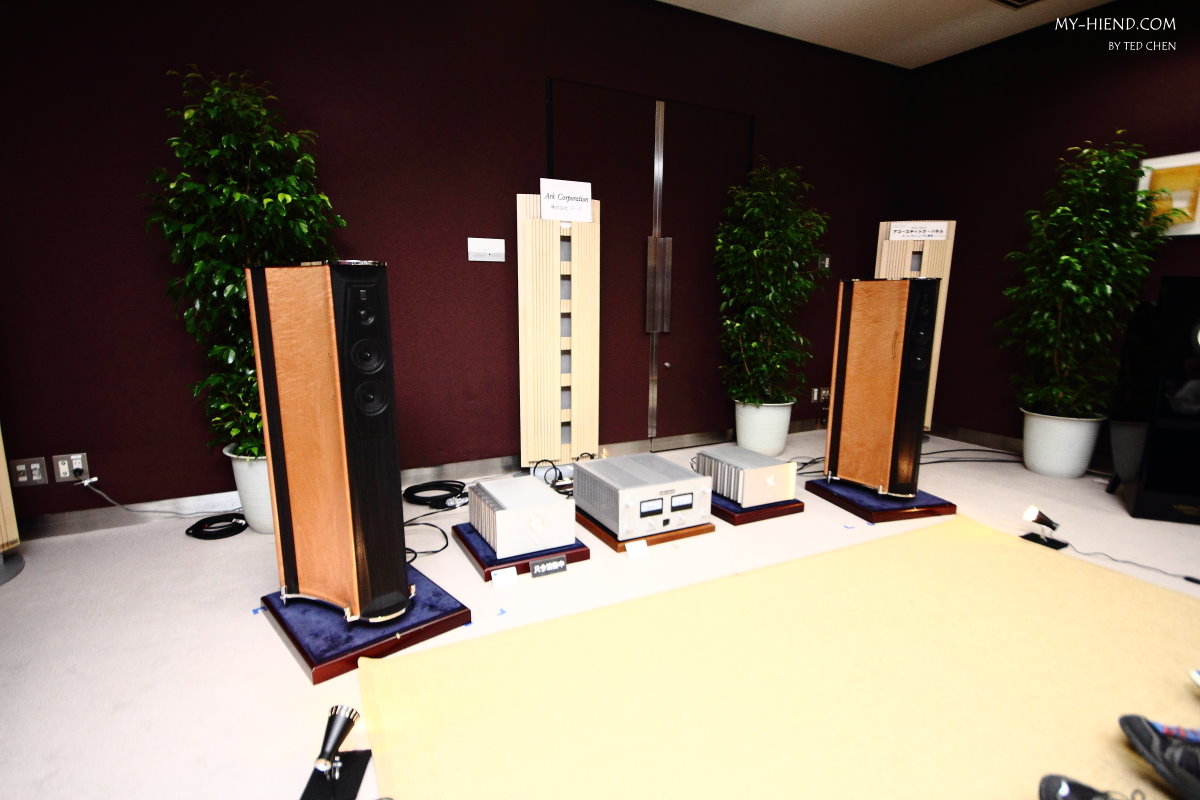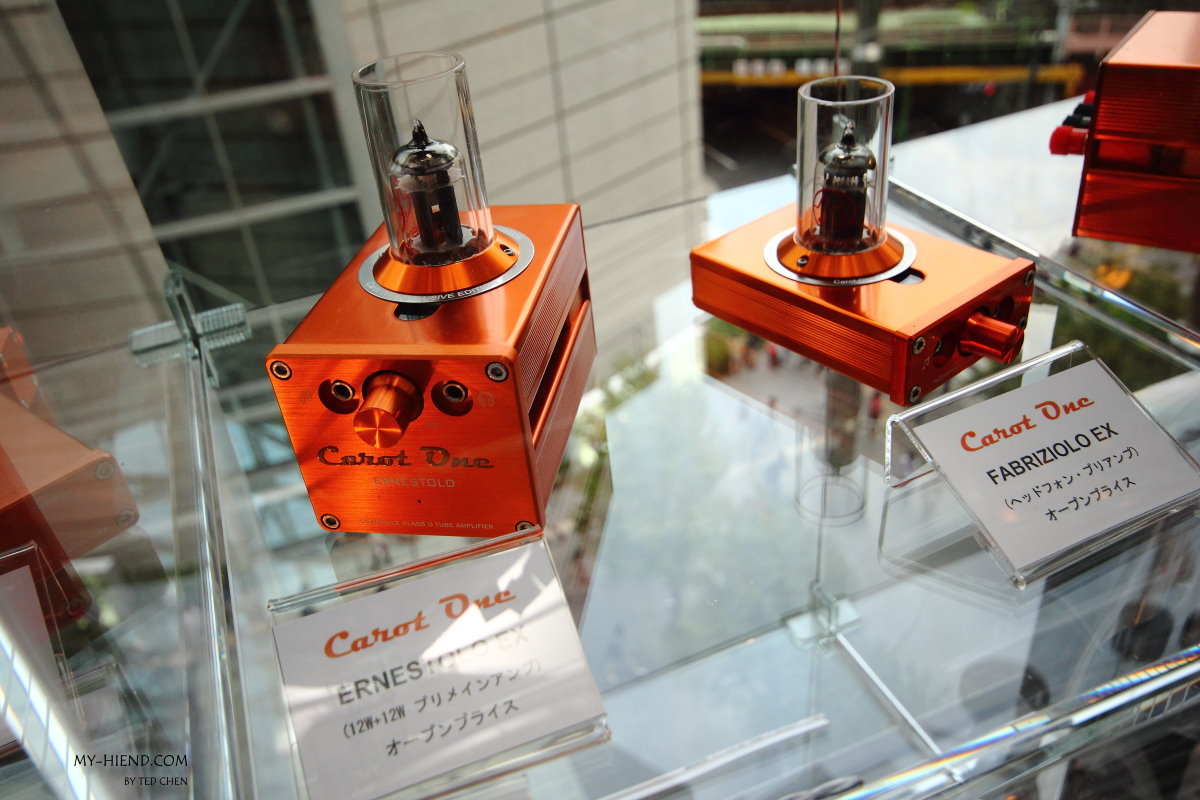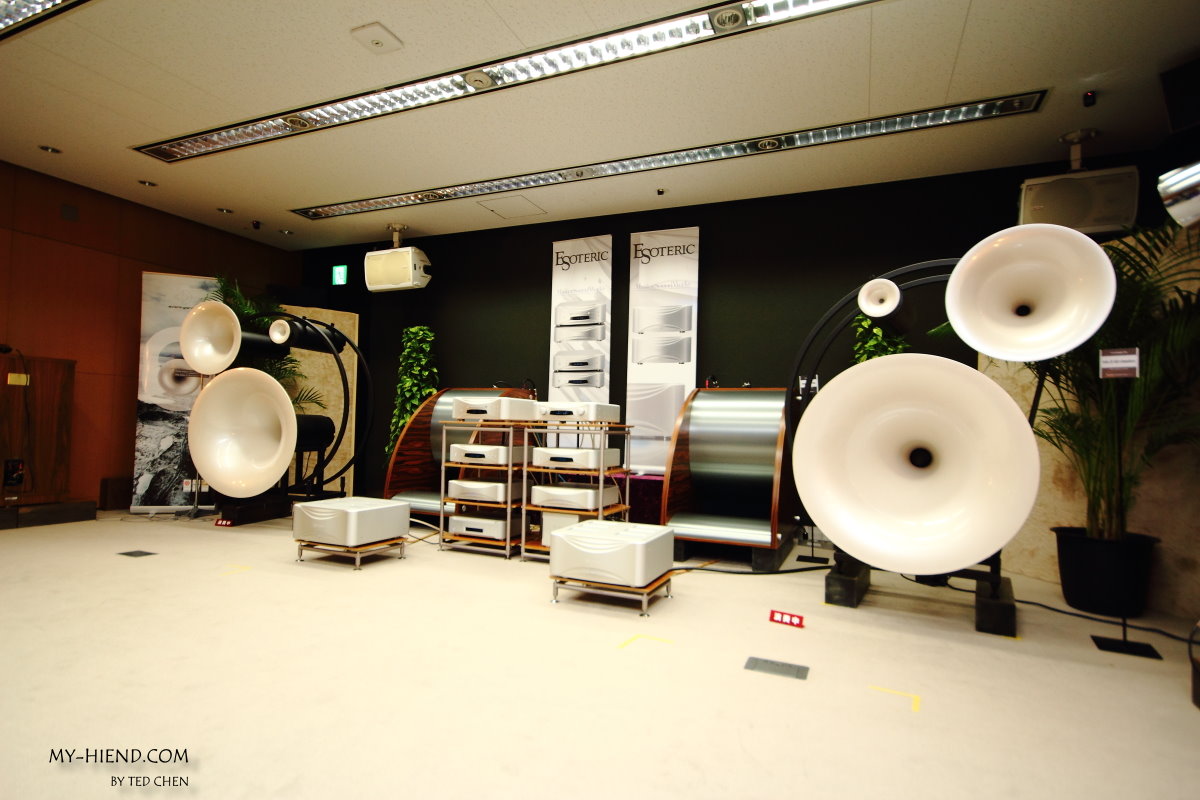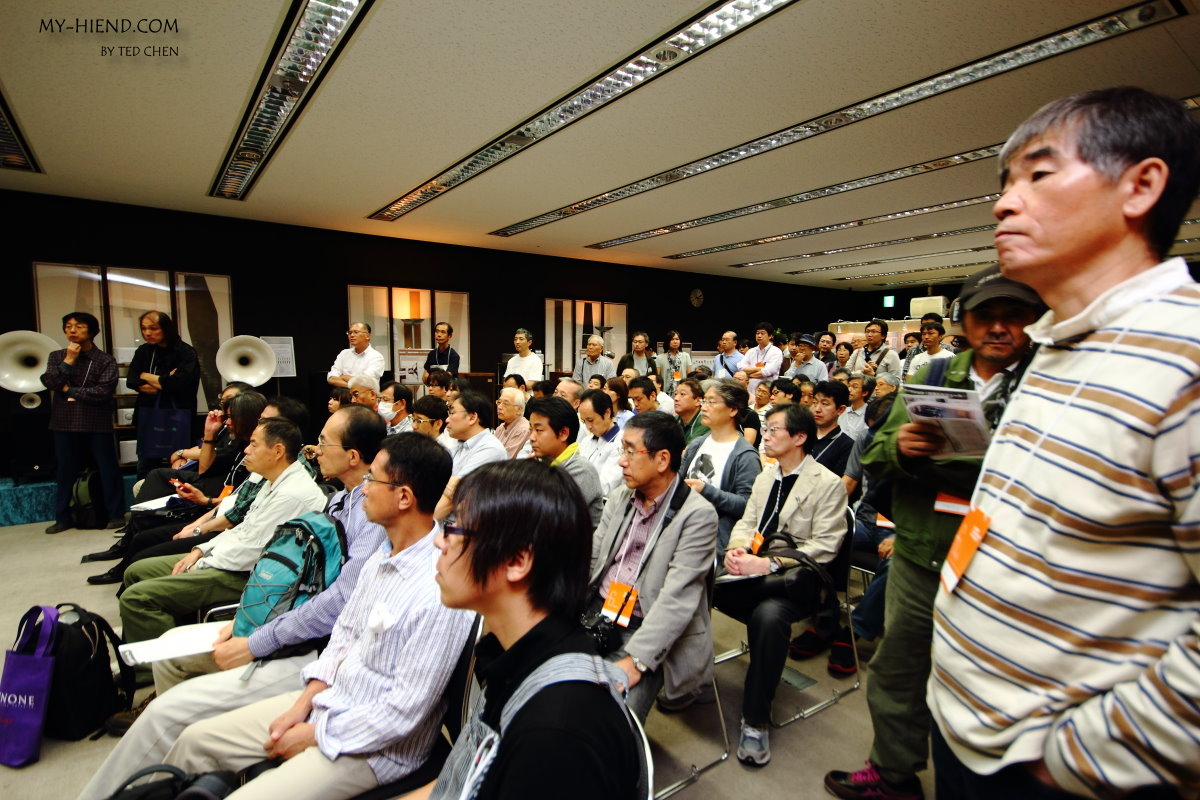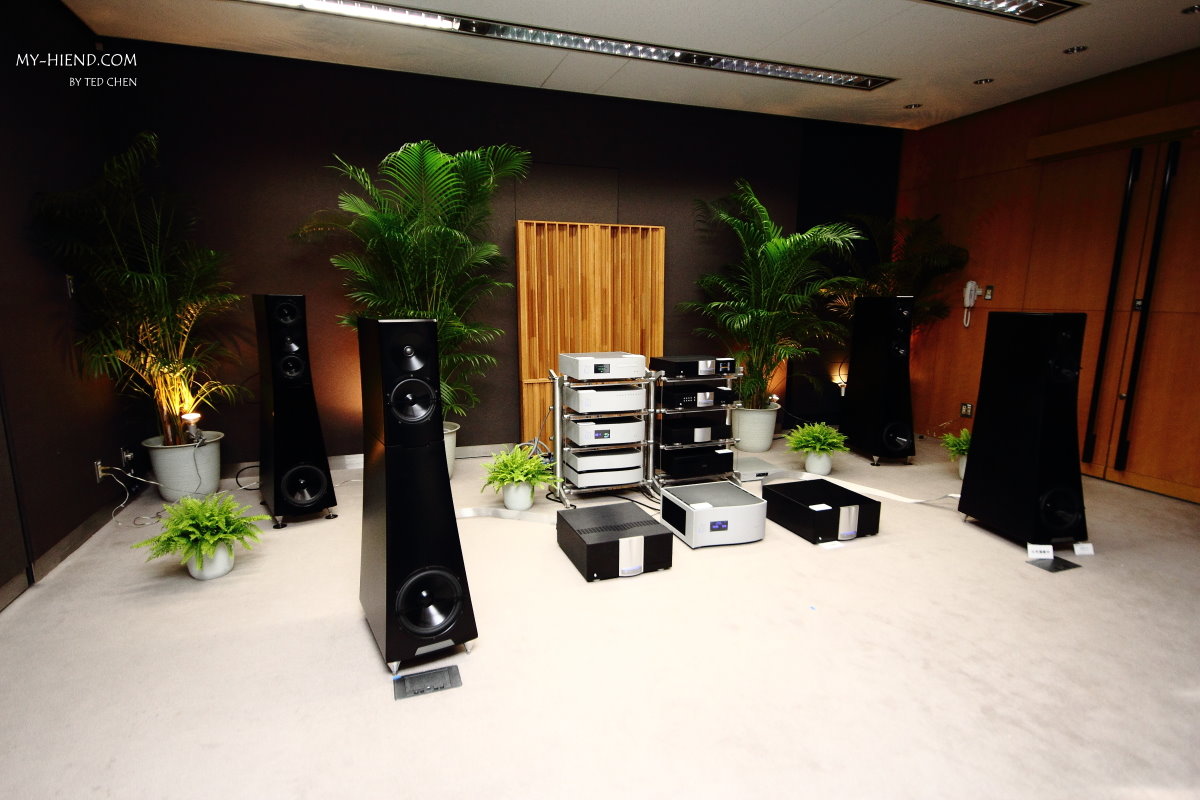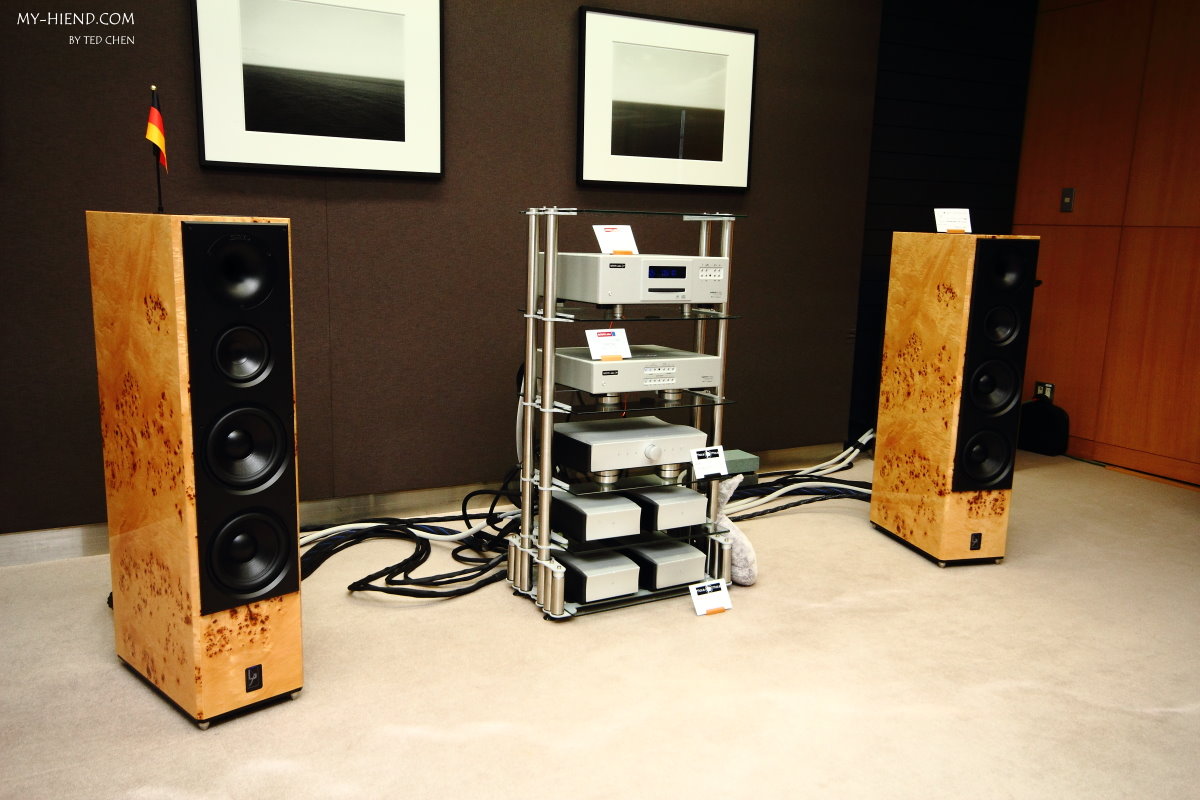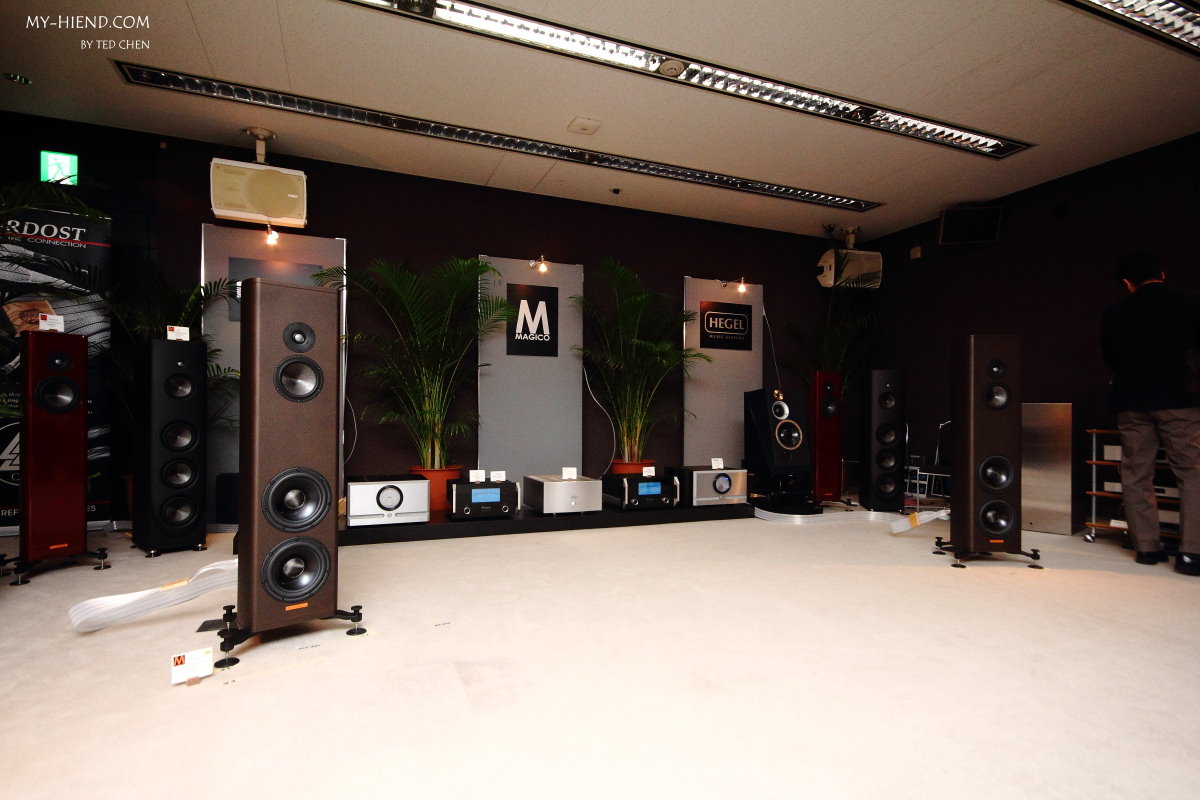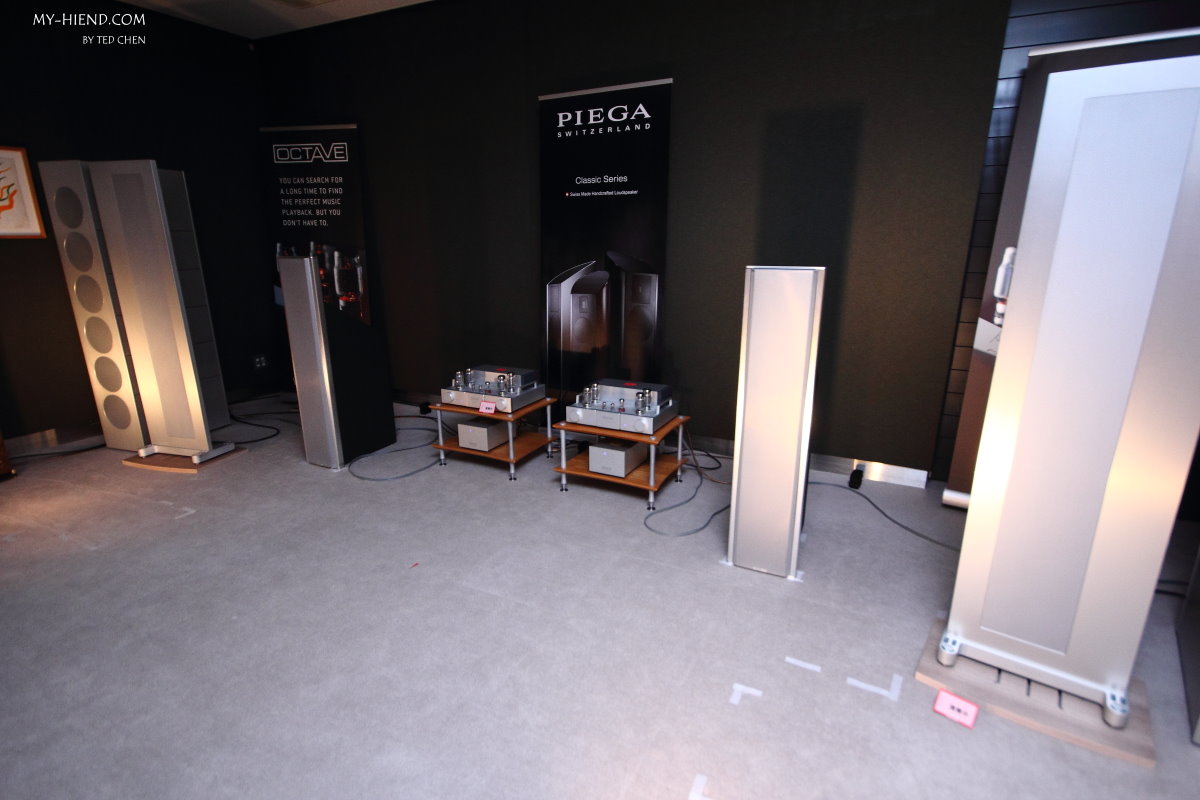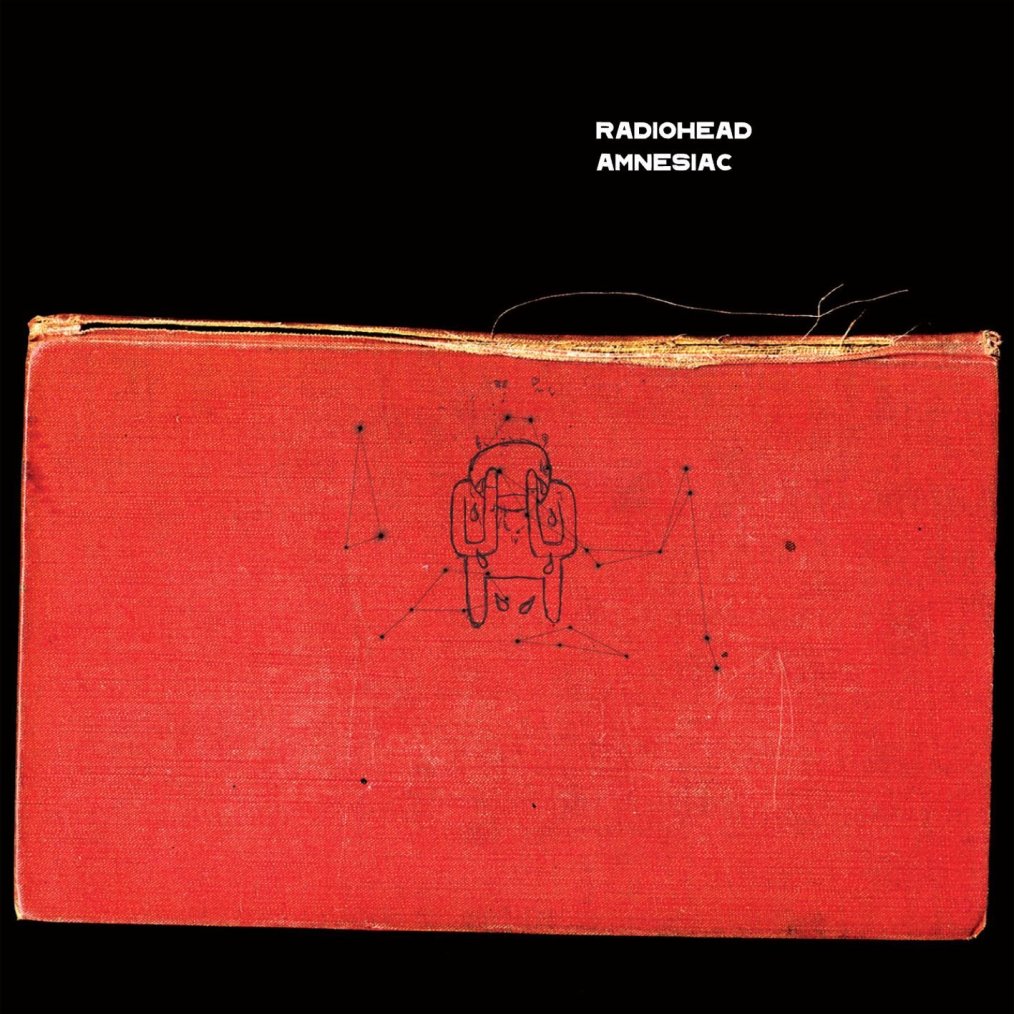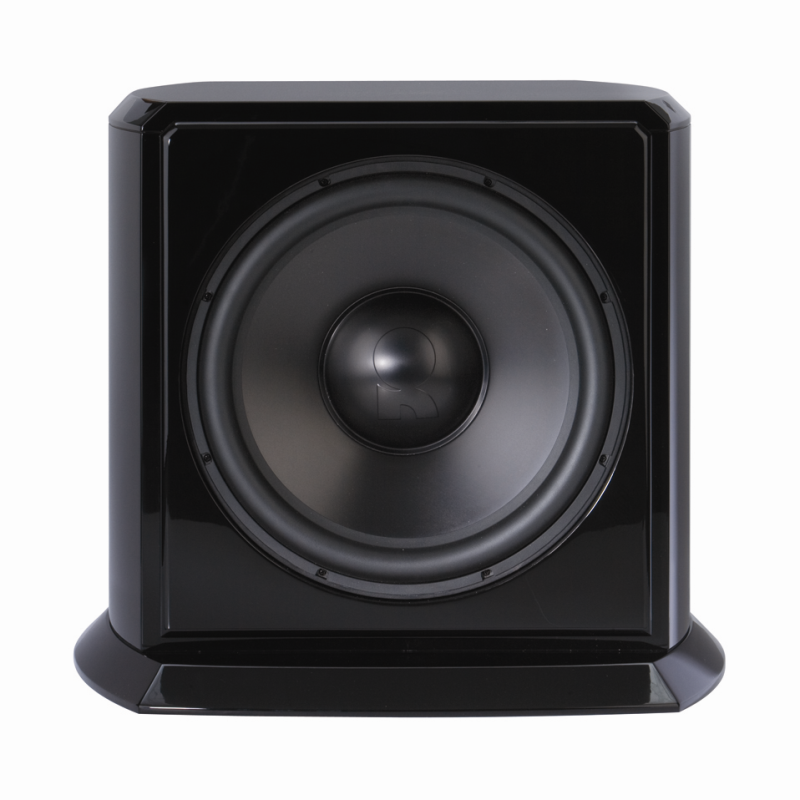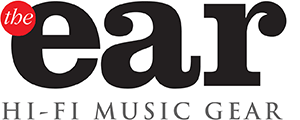A pictorial RMAF 2014 Show Report: Intro. Fun times with the fisheye lens. When I get a chance I will unwarp these photos, but for now you can see what a fish would see as they went in the front doors, went into the atrium into the outer CanJam area, into the CanJam headphone area itself, then into the music vendor room, and then the WBT room, then up to the Mezzanine and looked down on the first floor.
Yes, we are going to RMAF 2014. [official website]
Yes, this is our lame pre-show because we are still up here in Boulder, an hour away by car.
Yes, we are going to do a show report for RMAF 2014.
No, not sure what it is going to look like. Exactly.
Yes, we will try to do something ‘over the top’ and ‘different’ like we always [try to :-)] do.
No, this one will not be mostly on Instagram like our Newport high-end audio show report in May.
Yes, it has been rainy and cold all day, so wish the show was today because who wants to go out in this stuff?
Yes, the show seems even smaller this year. But, in the end, it doesn’t matter. It is the energy and sound that is important.
And besides, we got somethin’ better to do? This is kind of like what we do anyway, but now were gonna be doing it with a few thousand other people.
Sounds like fun to me!
The folks at My Hi-end have posted photos from the Tokyo Audio Show 2014 that was held a couple of weeks ago. If you want to see the details, or get more of the atmosphere of Tokyo, you should visit the link.
I thought some of the systems featured at the show had a unique combination of components that made sharing them here worthwhile.
[OK, so I like to gawk! :-)]
Beautiful poster above. Not sure what makes a show ‘international’. I suppose they are trying to indicate that the show is large and welcomes international exhibitors and attendees – however the Tokyo show seems smaller than many others [in particular RMAF, which starts here tomorrow!].

As you can see from above, it was mostly Japanese companies, with a few Euro and U.S. companies thrown in.

Certainly a significantly-sized building that the show takes place in.
Audio Research on Franco Serblin speakers. Typically the U.S. importer puts Air Tight on these speakers, so ARC would have been fun to hear.
Cute little carrot-colored Carrot One headphone amps
Cutaway view of the TechDAS Air Force Two turntable. Hate to think they wasted a platter for this demonstration :-), but fun to look – I’ve never seen anyone do this before.
DartZeel amps on Vienna Acoustics speakers. Typically the U.S. importer puts darTZeel on their own Evolution Acoustics speakers [and at Munich they were on Marten speakers]. So putting them on a speakers which is very popular here in the U.S. would have been interesting.
Esoteric electronics on Avantgarde horn speakers? And beefy Esoteric amps it looks like. As you can see below, there were quite a few people listening to this system. I bet it could go LOUD.
The audience listening closely to Esoteric electronics driving Avantgarde speakers.
Krell, and I am not sure what else, on YG Acoustics speakers. This setup we see quite often here in the U.S., and the fact that they use the same setup in Japan is interesting – that this is quite a statement about what YG Acoustics thinks goes great with their speakers.
Emm Labs (Meitner) digital into Mola Mola amps driving Lansche speakers. Starting to see more and more Lansche at shows these days.
Pass Labs and, alternatively, McIntosh amps on Magico S3 speakers. Nordost cables. All from the U.S. Nice to see more commonly found gear driving the Magicos.
Haven’t seen Piega speakers at a show in, like , for-ev-er. Well, we saw them at CES in 2012, but before that it was 2005 in NYC.
This look like Boulder / Denver today. But it is colder here [no short sleeves like those guys] and no coffee truck outside the Marriott Hotel (RMAF)
Sonus Faber (Italy) speakers on Audio Research (USA) amps [sometimes] and Burmester (Germany) amps [other times]. Have heard Sonus Faber on ARC amps plenty of times, but on Burmester amps? Here in the U.S. that combo is just so unlikely given that the two importers probably don’t even think about showing together.
There is some large number of rooms who swap in and out various amps every so often during the exhibition [like our room used to do at RMAF in the olden days] and sometimes speakers. Here we see D’Agostino amps and FM Acosutics amps driving various Wilson Audio speakers.
Well. Hope that was as fun for you… Tide us over until tomorrow. 🙂
Audio Note has a modest system once again in their room at RMAF 2014 this year.
TT Two Deluxe – $3,525 – Updated TT Two suspended, two motor turntable with wood-
veneered Russian birch plywood plinth, all internals upgraded to superior materials. An
external power supply with electronic speed switching is available as an option or
upgrade. Black Ash shown. Black or white gloss, rosewood and cherry are also available.
Arm Three V2 – $2,000 – New Audio Note-designed 9” tone arm, AN-AI 99.99% pure
silver wire with AN-Vx external cable. Single piece tapered arm tube from tip to tail. A
drop in replacement for 9”arms based on Rega geometry. Available in black or silver.
IQ3 – $980 – Our best moving magnet cartridge, with a Pocan body weighing 6 grams.
The square cross-section titanium cantilever with an Audio Note type 2 is identical to the
one used in our $4k+ IOI low output moving coil cartridge.
CDT One/ II – $4,100 – The display may be dimmed or turned off and a remote control
is included. Brushed aluminum fascia with aluminum buttons (shown), or black acrylic
fascia with gold buttons is available.
DAC2.1x Signature – $5,500 – A Red Book DAC utilizing the AD1865 18 bit chip that
allows it to read 24/96 files, (albeit truncated to 18 bits.) I/V conversion is accomplished
via purpose designed, in-house wound transformers. As in all Audio Note DACs, no up-
sampling, oversampling or filtering is used. Analog output utilizes a pair of 6922 tubes,
while power is rectified by a 6X5 tube. Output coupling is via Audio Note copper foil
capacitors. Audio Note tantalum resistors are used in critical locations. Your choice of
brushed aluminum (shown) or black acrylic fascia.
OTO SE Phono Signature – $6,325 ($5,525 line) – We took the classic OTO parallel single-
ended, EL84 integrated amp, added AN tantalum resistors and AN foil caps in critical
locations, then replaced the M4 IE output transformers with IHiB double c-core models –
superior magnetic core material in a superior topology. Available with your choice of a
brushed aluminum or black acrylic faceplate.
AN J/D – $3,700/pair satin ($4,000 as show w/hemp woofer) – Two way, acoustic suspension
speaker system, 92dB/w/m sensitive, using an 8″ woofer and a 1″ silk dome tweeter,
wired with Audio Note D copper speaker cable. This entry level version of the J uses a
cabinet with MDF front and back faces and particle board top/bottom/sides. The D model
is only available in satin black ash.
For today’s audiophile test track, my choice is: Radiohead: Packt Like Sardines in a Crushd Tin Box [this is a post from the long defunct Spintricity Magazine posted in 2009]
This has been one of my test tracks for several years and we’ve heard this track on 50 to 100 different show systems in addition to well over 100 variations on systems here at Audio Federation.
That the number is so low for show systems is because Radiohead music is difficult to reproduce except as a kind of “confused electronic mess with singer”, singing words that usually do not mean anything [in reality, that last part is true on all systems. I’ve read and reread the lyrics and am still scratching my head. It is a kind of abstract poetry that kind of bypasses the cognitive parts of the brain.]
Similarly, many people think this is a bad test track, that this music is bad in general for audiophiles to play because it is not “well recorded”. In fact, it is some of the most well-recorded music I know of. It is just not ‘simple’ music with one to three instruments and maybe a female vocal. Simple music has become synonymous with “audiophile music” because simple music is hardest to butcher on badly designed systems.
Do you need top-flight equipment to hear Radiohead correctly? First, I am not sure I’ve ever heard it ‘correctly’, just more correct and less correct, and sometimes just ‘different’. This has been played on systems like the $7K Odyssey Audio and of course, numerous small Audio Note and Acoustic Zen Adagio systems – and they are able to handle many of the complexities, and some of the subtleties, just fine.
The usual problems systems have with this track, and the CD in general, are 1) notes incorrectly placed in the sound stage, 2) multiple notes mashed together into one, and 3) lack of separation. We are, of course, ignoring the problems some systems might have with all music, like incorrect tonality, unevenness of response, etc. These problems, 1,2, and 3, are related and can be described as the notes not being correctly position in space and time [start, stop, and duration], as well as frequency [tone] and amplitude [relative loudness].
It is only over time that we can come to realize just how much effort Radiohead has put into their music. How they make sounds out of thin air – that these sounds have certain positions, that they often move and change shape, and that the whole sonic stage is their playground. Instead of just putting out a simple love song with a 3-part harmony in the background, or angst ridden lyrics on top of computer enhanced guitars, they work like a painter with a canvas, painting sounds one by one onto the initially deathly quiet, silent, desert of a sound stage.
This is what I really love about Radiohead. Their music is harmonically interesting, playful, and emotional in a kind of gently angst-ridden wistful manner.
So what we are going to do now in this article, and for every article in the Listening section of our magazine, is to describe what the author found to be the significant notes and parts of the song in question, in this case Track 1 on the Radiohead Amnesiac CD. We will describe what we listen for, and several variations of what we actually heard, for each of these notes. We all do this on our favorite songs, right? From the intense drum solo at the start of “I Want My MTV” to the sweet delicacy of the chimes on Track 2 of American Beauty – we listen for special parts of the song, and over time we learn to hear that they sound different of different systems.
I am sure there are several things everybody listens for on their favorite songs. What we are going to do here is actually talk about them.
Packt Like Sardines in a Crushd Tin Box, which really should be called “I’m a Reasonable Man, Get Off My Case”, which is the recurring refrain, starts off with the banging of what sounds like a stick on the edge and side of a steel drum. The drum is very slightly left of center. The strikes vary between hitting the edge, and hitting the side of the drum. The strikes on the side generate subtle secondary vibrations that almost, almost define the shape of the body of the steel drum [or whatever it is. It sounds like our Jamaican steel drum, but when hit on the top and side, and not on the traditional drum-playing surface. The strikes on the top of the steel drum also define the shape of the drum, but much, MUCH more subtlety].
What to listen for here is the different decays of the two different strikes, the secondary vibrations of the drum that define its shape, the solidity of the strikes, and sometimes, I can almost hear the stick not quite hit the drum edge straight on, and it slides a wee little bit against the drum during the strike. Behind the b-bamm-bamm of the steel drum strikes, there is the very faint drumming, on a traditional drum set, in an unrelated rhythmic pattern. I rarely pay that much attention to this background drumming, except to note that it is way, way back in the soundstage.
The intro, just described, lasts only a few seconds, and the real intro starts with some aggressive synthesized bass rhythms. Most systems, including those with 2-way speakers, get some satisfaction from this bass track. That doesn’t mean that they play it correctly, just that is sounds darn good anyway and that the bass, although deep, also extends up into the midbass. What I listen for is how tight and authoritative the drum beats are. This requires the entire system to be able to start and stop a note quickly, that is both channels and all components – at the same time. The speakers best able to handle this, in my experience, has been the big Triolon horns – they would suck all the air out of the room, and then pump it all back in. At least they felt like they were doing that to my chest. The second best, in this regard, was the Lamm ML3 on the Coltrane Supremes on the cement floor of our exhibit room at RMAF 2008. In this case, I believe I started to hear little reflections of the bass notes within the notes themselves, i.e. they weren’t all just a simple square wave. At this point I wish I could just stop typing and go listen again to make sure 🙂
Throughout all of this and especially as the song properly starts, there is the idea of the rhythm of the song, in particular the much-maligned idea of PRaT. Not sure why it is maligned, except to think that some joker once said they didn’t think it existed and forum group think did the rest. PRaT with respect to Radiohead, including this song, is an interesting and complicated thing. This is not Steppenwolf’s “Born to Be Wild”. There are many sub-melodies and they have their own beats, which usually are only occasionally related to the main beat of the song itself. But if you listen, you can hear that they too have PRaT, and you can tap your toe to them – but people might think that you are listening to a different song than they are [and you would be!].
The vocals come in at this point, and a few more melodies. Vocals are, as usual here, understated. There is emotion, but it takes a lot of resolution and the ability to handle subtleties like the constriction of a throat after a particular word, and the shape of the mouth after, say, the word ‘case’. Is he pleading or demanding, threatening or entreating? He is not a crooner, belting it out so the whole world knows how he feels. He is just a reasonable man, like [most of] us, and is telling you how it is. Listening to how his lips move, listening to his breathing, and fancy not so ordinary guy stuff like tremulo, helps define the song itself for me. Certainly, a system like one with Audio Note electronics, Jorma Design PRIME cables, and Kharma speakers makes him sound almost actually emotional [?]. Most systems at shows do not have the sufficient resolution and subtlety and he sounds cold and unemotional and distant.
At this time, along with the voice, the keyboards start up a melody. Along with the voice, I also listen to this specifically to hear how much harmonic color there is in each note. Note, by harmonic color I do not mean smearing and over emphasis of particular frequencies to the exclusion of others. What I mean by excellent harmonic color is that each subtone be fully fleshed out and not dominated by, nor dominating, other nearby frequencies and overtones as they actually exist in the music.
For example, and this is still before the 1 minute mark, there is a brassy plucking sound in the left channel that starts up. This should have good rhythm, good brassy color, and good separation, especially from all the other stuff that is going on.
And that is the key to Radiohead, at least from the standpoint of my enjoying it so much, and that is having lots of separation. I can pick and choose, using my ears, any number of very entertaining and interesting melodies to listen to: the drums, the electronic beat, the steel drum, the voice, and the weird sounds. The sounds often get lost on many sound systems.
About this time a recurring constant tone is started. Its blandness and lack of texture can be annoying. It does have SOME texture, but so little that it is very hard to hear.
At about the 1 minute point, the voice picks up some gravelly overtones. Most systems seem to catch at least some of this.
At about the 1:40 point, there is a sound that sounds like a voice played backwards, over and over. Kind of a fffwwwhhhtt fwht fwht sound. [OK, well YOU try and pronounce it :-)]
At about the 2:30 point, the electrified voices and breathy sigh is fun. All through this song, more and more things start up in the background. Many of these things sound like voices, and it is all about delicacy, the purity of the tone, and the quickness and the separation: getting the sound to appear and disappear quickly and in isolation from the rest of what is going on.
At the 3 minute mark, lots of weird voices now. Some of them move back and forth between the speakers. How well does the system keep these separate from the song? There is a sound that I call a pig sound [kind of like on Pink Floyd Animals… but not]. How resolute are the subtones in this noise? Can you almost make out words? There are symbols being struck way, way in the back of the soundstage. The electronic beat is still a beating. The voice still has a beat of its own. At this point, most systems just jumble everything together. You can hear that there are noises – but not as something separate and as if it came from a different instrument the rest of the sounds. Does everything still have a separate and distinct well-defined beat? Or is it jumbled so much that all the different beats add up to having no distinct beats at all – and it just sounds like a badly recorded bar band?
The last word of the song, ‘case’, as in ‘get off of my case’, has a long drawn out ssssss. This is often a good test of sibilance.
The song then winds down after 10 seconds or so. This is usually anti-climatic. It is anti-climatic because 1) we are so burnt out by listening intently to everything and trying to identify the plusses and minus of a particular system configuration, and the corollary task of trying to express that in English to each other, and the other task trying to figure out WHY it now sounds the way it does, what cable/part is the most responsible for the current performance level. OR, 2) we are so overwhelmed by the intensity and beauty and power of the sound that we have to wait a little to recover from it all. 2, of course, is the most fun and it still happens on a regular basis, thank goodness.
Originally, when I started using this as a test track, it was just a nicely melodic song with a few things going on in the soundstage that I enjoyed and thought would be mostly acceptable to play at shows. It was later, when I played it at shows, that I learned just how hard it was for most systems to get anything near the right sound in the right places with this song.
It was only later that I listened deeper when using this music, looking for lots of separation and correct attack and decay. This is represented in my head by requiring that the images of the sounds on the soundstage be well-defined – but it is really also a requirement that the elapsed time and harmonic structure of the note be well-defined as well.
And it has been quite recent, since the influx of top-end gear here last year, and especially the little system with the Marten Coltrane 3-way speaker, the Audio Note Ongaku, and the Emm Labs TSD1/DAC2, with the Nordost ODIN powercord and mostly ODIN cabling [Jorma Design PRIME to taste] that it was realized that it is indeed possible to hear each strand of music, on its own, just like you can when you hear sound in the real world. The surprising thing here is 1) why didn’t we notice that this was so hard to do before? 2) Surprise that this is yet another thing that humans can do without and not whine much about [like B&W versus color TV], 3) what goes into making it easier to hear on this system? 4) We are doomed because we are now addicted.
After this discovery, we notice how we can and cannot do this ‘listen to a single instrument’ thing on other systems and it has especially become a new thing to listen for with this song.
Finally, this is still my primary test song. But… I have started playing various other Radiohead songs as test songs, because I see burn out on the horizon for this song – and I like it too much to let that happen.
[Oh well, best laid plans. That was in 2009. I hardly play this anymore. Why? Got soooo burnt out on it :-}} ]
Radiohead’s Amnesiac album is a favorite test album here. It tests many things about a high fidelity audio system that most other albums do not.
Many people say test tracks must be music where the musicians use exclusively acoustic instruments. That one can only compare a reproduction of the sound of a musical instrument to an instrument whose sound one is familiar with in the real world. The ‘absolute sound’.
First, people who use this technique aren’t any better, in my experience, at understanding what they are hearing when listening to a system than anybody else. And maybe a little below average at that.
Second, real acoustic instruments have a wide variety of sounds e.g. all guitars do not sound alike. So, which one are they comparing the sound on the stereo to?
Third, most acoustic instruments are extremely easy to reproduce. All percussion, flutes, most instruments in a 3- or 4-piece jazz composition, etc.
Fourth, classical music, the gold standard of acoustic music, is usually recorded so badly that it is largely just a wall of sound. Great systems help; but still, poor, so poor, oh so poor quality.
OK. Back to Radiohead. Back to heavily processed very complex very well-recorded music.
Using consensus-based evaluation, after listening to a track on many different systems, at least some of which do not suck, one learns where sounds are supposed to come from: their location in the sound stage, how far away they are, how large they are, where the are moving to, what the decay is supposed to be, etc.
One learns that some systems can disambiguate a pair of notes and some cannot.
One learns that some systems can communicate that the vocals are full of angst and others the vocalists always sound bored [voice is the only overlap with the ‘absolute sound’ people, though they seem to not pay much attention at all to this ‘most popular acoustical instrument EVER’ that we all are so familiar with – especially those with talkative spouses :-)]
One learns that many of the sounds on these tracks are so weird that they are extremely hard for inferior systems to reproduce at all well – it often will sound like something is broken (though sometimes that is the way it is ‘supposed’ to sound 🙂 ) [whereas reproducing a violin or piano, possibly the most complex acoustic instruments, can be done by the most modest of stereo systems well enough to fool some people all of the time].
Anyway, Radiohead in general is great for testing hifi systems, and especially the later albums where the quality continues to improve. Amnesiac is just the first Radiohead album that I happened to fall in love with.
Anyway, that is our opinion and these techniques have worked well for us. For example, they are extremely useful when we want to know immediately the capabilities of an unknown system.
Older people hear music better and there is hope for high-end audio as the earbud-wearing, cheap-headphone-toting kids grow older and start to hear more and more nuances and finer details of the music they are listening to
Some think we heard better when we were younger.
I used to think YES. This is exactly right.
That music sounded glorious in our teens because we could hear harmonics better. So even inferior stereo systems sounded Grrreat. [Boy, did they!]
That we spend our later years having to build systems with more and more resolution and harmonic content because we have a hard time getting the musical content past our aged ears and hardened listening centers and into our poor overworked tired brains
But now I really wonder if this is Bull Hockey.
That the young have unformed, lazy, uneducated ears. That they could hardly benefit from high res and rich harmonic content because their young ears and brains just cannot process it.
Of course, some people’s ears never grow up. They remain lazy and dull in their admittedly extra-curricular job as fine listening instruments.
But this explains why we have all these iPod, earbud-listening kids. This just sound grrreat to them. But later, as they get older, their ears will begin to develop and they will want a more refined listening experience.
This bodes well for the high-end audio business in the next couple of decades.
I came around to this point of view because sometimes I notice my ears becoming VERY sensitive. The sound of my [long] hair moving across my face was loud and annoying me. WTF?
I have come to realize that my hearing is often incredibly sensitive, especially in the early morning or late at night.
Often painfully so.
Well. Not painfully. Supremely annoyingly so, anyway, in the wrong environment.
So, it is not that screaming kids irritate adults because the kids are all that loud. It is that adults have more and more sensitive hearing as they age.
Sure we lose a few Hz at the top frequencies as we grow old, but the overall effect is one that allows us to hear the most fantastic nuances in music, voice, and in the sounds of the world all around us.
Cool huh? 🙂
The subwoofer has an interesting role in high-end audio.
I’ve been thinking about these beast ever since we started our new high-end audio subwoofers page in the Audiophile’s Guide to the Galaxy
It is both loathed and reviled and cheered and loved with abandon.
PRO
1. If your system is not flat to 20 Hz, then your system sucks. It is just for leettle boys.
[Of course, at 100 dB, a subwoofer flat to 20 Hz… oh, excuse me, it says 15 Hz on the spec sheet, would have to be registered as a weapon of mass destruction. It would be hard to walk across the floor of most homes but at least the mice would finally give up and go live somewhere else :-).]
2. Subwoofers are cool and should indeed be registered as WMD
3. It is too expensive to buy a full-range speaker that goes this low
CON
1. The crossover in your subwoofer is necessarily not as deft as that in your much-more-expensive speakers, and in any case it is different, so the overall sonic quality of your playback suffers.
2. Most real music does not go down to 20 Hz. In fact most modern music is heard through JBL-like speaker systems and the satisfying bass we hear on those systems is way above 20Hz.
3. Subwoofers take up space
Most people buy subs for home theater, pairing them with small speakers that only go down to 100Hz or so. They NEED to use subs to get any bass at all. I’ve heard Magnepan systems designed like this that were excellent – small Magnepan wall-hanging speakers and a REL sub.
Us? We’ll stick with full-range speakers that go down MOSTLY to 20… uh…. 25… uh … Hz. It works for us at this time.
Subs are just not a necessity for us.
However, having heard the Acapella ION Plasma tweeter again here for almost a year now – I think super tweeters might indeed be a necessity. 🙂
[Having a hard time convincing Neli of this… but there is just so much more Presence and Life when the high frequencies are fully fleshed out… Then again there are the same pesky CONs #1 and #3]
In the end, it is this argument [and not the “You ain’t no manly man without a sub” argument :-)]:
How can it be “high fidelity” if your system can’t reproduce all of the frequencies?
I confess. We don’t use a subwoofer. And this question annoys me.
Added More high fidelity blogs to the Audiophile’s Guide high-end audio blogs and magazines page.
The featured photo is of HiFi Answers alternatively called Our Listeners Club. It seems to be the most opinionated and of most interest to me.
The Poor Audiophile also has some good food for thought. Loving it. Great name by the way.
Sound Perfection has a ton of reviews of Headphones and their paraphernalia. Kind of wish the index had links to the reviews…
The Ear is a modern magazine type website – nice and helps us keep up with what is happening to our audio world which we probably should do a better job of…
Three of these have feeds and will appear shortly on Ultimist.
But, first: time to Press Play.
The Grateful Dead playing Dark Star forever and ever and ever… Or. Are. They?
[Dark Star] Grayfolded 1 & 2 – John Oswald Grateful Dead. As CDs or as 3-LP 180-gram set
Let me pull some quotes from the Amazon comments:
“What Oswald did was use parts of the Dead playing “Dark Star” to create his own piece.”
“In some pressings of [CD] disc 2, there are three minutes of extra music hidden before the Multiple Garcias shout “transitive nightfall of diamonds”.
“He has taken over a hundred hours of tapes from the Dead Vaults ,all of performances of Dark Star and compiled ,segued and overdubbed a symphony of the Dead.”
“…as we hear Jerry Garcia in 1971 duelling with Jerry Garcia in 1991”
Part of “The Dark Star” effect, for me, is that we could listen as they actually had the guts to subject unwary crowds to this kind of “This is how your thoughts sound on Pluto. Say Hello’ music. And how much the crowds [and me!] liked it.
This is not that.
That said, this album sounds like it would be very … uh…. inspiring. Yeah. That’s it. I bet they sell a lot in Boulder. It’s on my list [have to see if Neli will… uh…. not like…. them tampering with perfection by remixing the Dead like this. 🙂 ]
[Thanks to TwoGoodEars for posting about this album. Wow.]

